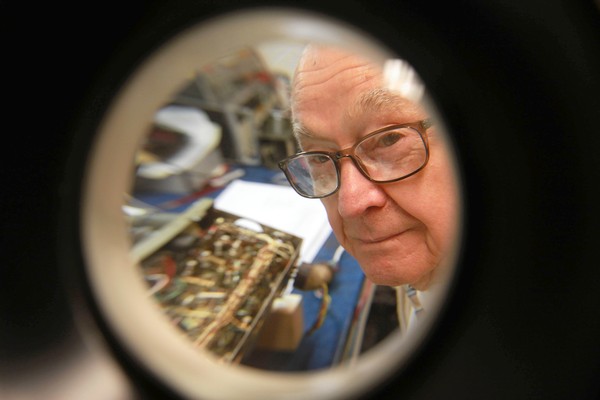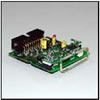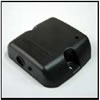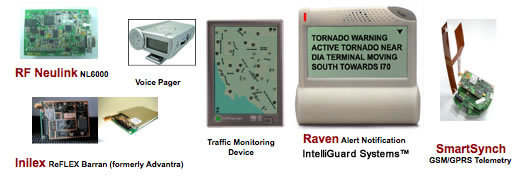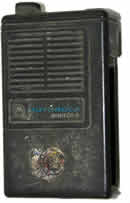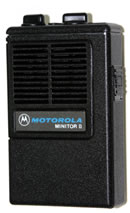BloostonLaw Telecom Update Published by the Law Offices of Blooston, Mordkofsky, Dickens, Duffy & Prendergast, LLP [Portions reproduced here with the firm's permission.] www.bloostonlaw.com |
| Vol. 13, No. 28 |
June
14, 2010 |
 URGENT:
Clients Are Urged To Participate In BloostonLaw USF Comments BloostonLaw has drafted comments to urge the FCC to adopt a reasonable approach in reforming Universal Service Fund (USF) rules, so that small and rural telecom carriers will not be unfairly denied support to carry on with the important process of bringing broadband services to their customers. These comments must be filed with the FCC by Monday, July 12, 2010, in WC Docket No. 10-90, GN Docket No. 09-51, and WC Docket No. 05-337 (the USF Reform NOI and NPRM proceeding). It is vital that the FCC see as much support for these positions as possible. Therefore, we urge all of our clients to join in supporting these comments. We will keep the per-client cost for participation at $500. In order to participate in the comments, please simply request a copy of the draft comments by contacting one of the following attorneys: Ben Dickens (202) 828-5510 bhd@bloostonlaw.com
Gerry Duffy (202) 828-5528 gjd@bloostonlaw.com
Mary Sisak (202) 828-5554 mjs@bloostonlaw.com We welcome any questions or comments on the draft.
|
President Obama has announced 66 second round Recovery Act broadband stimulus grants totaling $795 million. The projects are aimed at expanding Internet access and public computer centers in underserved communities. A list of the awards may be found at www.whitehouse.gov. INSIDE THIS ISSUE - House panel asks FCC for info about public safety broadband network.
- High court rules employers can examine text messages on pagers issued to their employees in Ontario case.
- Rep. Kucinich to introduce bill for cell phone radiation research, warning label.
- International Telecommunications Traffic Reports are due August 2.
|
House Panel Asks FCC For Info About Public Safety Broadband Network Last week, Reps. Henry Waxman (D-Calif.) and Joe Barton (R-Texas), Chairman and Ranking Member of House Energy and Commerce Committee, respectively, and Reps. Rick Boucher (D-Va.) and Cliff Stearns (R-Fla.), Chairman and Ranking Member of the Subcommittee on Communications, Technology, and the Internet, respectively, requested information from FCC Chairman Julius Genachowski regarding the proposed nationwide public safety broadband network. The lawmakers noted they had held a hearing on a discussion draft that would provide funding for constructing and maintaining such a network, and that the draft would require the FCC to implement technical requirements to achieve nationwide interoperability as well as auction spectrum for the purpose of raising the billions of dollars necessary to construct and maintain such a network over the next 10 years. They said the discussion draft relies on many of the recommendations put forth by the FCC in its National Broadband Plan (NBP). The actions of Congress and the FCC with regard to the rollout of the public safety broadband network not only affects public safety agencies, but also impacts our commercial carrier clients with regard to (1) their opportunity to bid on the D Block 700 MHz spectrum; (2) the obligations that may be imposed on all 700 MHz auction winners to cooperate with public safety; and (3) the opportunity to partner with public safety agencies in building statewide or regional broadband coverage. For example, the lawmakers said, the draft contemplates that public safety would operate its broadband network utilizing the same air interface as commercial licensees in the 700 MHz band. In addition to helping ensure interoperability, the NBP suggests that this approach would allow public safety to take advantage of economies of scale associated with a market in which there are a variety of commercial providers purchasing equipment and devices from a range of vendors. Such economies of scale could reduce significantly equipment costs for public safety users. The lawmakers believed that this proposal represents a significant change from today's public safety communications equipment market for voice or "narrowband" services. As the NBP states, the lawmakers continued, "[p]ast efforts to create a public safety narrowband interoperable voice network have failed." Public safety has typically had to rely on an exclusive or limited vendor pool for equipment and devices, and the cost of the equipment is often more expensive than comparable commercial equipment. Some have suggested that these factors limit public safety's options and may even undermine attempts to achieve interoperability. To improve the existing public safety equipment and device market, and to help with its ongoing evaluation of the NBP recommendations, the lawmakers asked the FCC Chairman to answer the following questions by July 15: 1. Please provide a list of the top four vendors of public safety narrowband equipment and their respective market shares. If the FCC does not track this information independently, please use public references to provide these details. 2. Have proprietary solutions affected interoperability, innovation, cost, or competition in the market for public safety communications equipment? a. How would the greater use of open standards affect these factors? b. What steps should the FCC take, if any, to encourage the use of open standards in public safety communications?
3. Please provide information on whether the public safety interoperable voice network, governed by Project 25, has achieved true interoperability. a. Has interoperability been hindered by a lack of competition in equipment and device availability? b. To the extent that interoperability has been hindered, please provide specific examples.
4. Does the current structure of the public safety equipment market hinder efforts to achieve interoperability for a broadband public safety network? If so, please provide a description of possible steps the Commission might take to remedy this situation. 5. Section 101(b) of the staff discussion draft sets forth criteria for the Commission to consider in establishing rules for interoperability. How should this list be revised to ensure that interoperability is achieved in the broadband network, unlike the "failure" that occurred in the narrowband network? What technical and operational framework might be more appropriate to ensure interoperability on a future nationwide wireless public safety broadband network? 6. Can interoperability requirements applied to the wireless public safety broadband network be utilized to promote interoperability between the narrowband and broadband networks?
BloostonLaw contacts: Hal Mordkofsky, Ben Dickens, Gerry Duffy, and John Prendergast. High Court Rules Employers Can Examine Text Messages On Devices Issued To Their Employees, in Ontario Case The U.S. Supreme Court has ruled that municipalities have the right to examine the text messages of public employees on municipality-issued pagers, and that the employees have no reasonable expectation of privacy. In City of Ontario (Calif.) v. Jeff Quon, the high court unanimously upheld the City’s right to review the personal texts of SWAT police officer Quon on his department-provided pager because the department was attempting to determine whether to increase the pager fees. The case was on appeal from the 9th U.S. Circuit Court of Appeals in San Francisco. According to the Supreme Court, Petitioner City of Ontario acquired alphanumeric pagers able to send and receive text messages. Its contract with its service provider, Arch Wireless, provided for a monthly limit on the number of characters each pager could send or receive, and specified that usage exceeding that number would result in an additional fee. The City issued the pagers to respondent Quon and other officers in its police department (OPD), also a petitioner in the case. When Quon and others exceeded their monthly character limits for several months running, petitioner Scharf, OPD's chief of police, sought to determine whether the existing limit was too low, i.e., whether the officers had to pay fees for sending work-related messages or, conversely, whether the overages were for personal messages. After Arch Wireless provided transcripts of Quon's and another employee's August and September 2002 text messages, it was discovered that many of Quon's messages were not work related, and some were sexually explicit. Scharf referred the matter to OPD's internal affairs division. The investigating officer used Quon's work schedule to redact from his transcript any messages he sent while off duty, but the transcript showed that few of his on-duty messages related to police business. Quon was disciplined for violating OPD rules. He and the other respondents—each of whom had exchanged text messages with Quon during August and September—filed a lawsuit, alleging that petitioners violated their Fourth Amendment rights and the federal Stored Communications Act (SCA) by obtaining and reviewing the transcript of Quon's pager messages, and that Arch Wireless violated the SCA by giving the City the transcript. The District Court denied the officers summary judgment on the constitutional claims, to determine that Quon had a reasonable expectation of privacy in the content of his messages. Whether the audit was nonetheless reasonable, the court concluded, turned on whether Scharf used it for the improper purpose of determining if Quon was using his pager to waste time, or for the legitimate purpose of determining the efficacy of existing character limits to ensure that officers were not paying hidden work-related costs. After the jury concluded that Scharf's intent was legitimate, the court granted the City summary judgment on the ground they did not violate the Fourth Amendment. The 9th Circuit reversed. Although it agreed that Quon had a reasonable expectation of privacy in his text messages, the appeals court concluded that the search was not reasonable even though it was conducted on a legitimate, work-related rationale. The opinion pointed to a host of means less intrusive than the audit that Scharf could have used. The appeals court further concluded that Arch Wireless had violated the SCA by giving the City the transcript. Because the search of Quon's text messages was reasonable, the Supreme Court reversed the appeals court decision, saying that the City did not violate the officers‘ Fourth Amendment rights. The Supreme Court said that “Petitioners’ warrantless review of Quon’s pager transcript was reasonable . . . because it was motivated by a legitimate work-related purpose, and because it was not excessive in scope. There were reasonable grounds for finding it necessary for a non-investigatory work-related purpose, in that Chief Scharf had ordered the audit to determine whether the City’s contractual character limit was sufficient to meet the City’s needs. It was also reasonably related to the objectives of the search, because both the City and OPD had a legitimate interest in ensuring that employees were not being forced to pay out of their own pockets for work-related expenses, or, on the other hand, that the City was not paying for extensive personal communications.” While the Supreme Court’s decision clarifies that employers can under certain circumstances review employee communications, at the same time it highlights the obstacles that employers must overcome. The case turned on close scrutiny of very specific facts, and the fact that three courts reached different conclusions shows the complex nature of the issue of employee expectation of privacy. BloostonLaw contacts: Hal Mordkofsky, Ben Dickens, Gerry Duffy, and John Prendergast. REP. KUCINICH TO INTRODUCE BILL FOR CELL PHONE RADIATION RESEARCH, WARNING LABEL: Rep. Dennis J. Kucinich (D-Ohio) has announced his intent to introduce a bill to create a new national research program to study the impact of cell phones on health, require an update of the decades-old Specific Absorption Rate (SAR), and grant a consumer’s right-to-know by providing for warning labels on cell phones. “Consumers have a right to know whether they are buying the phone with the lowest — or the highest — level of exposure to cell phone radiation. They also deserve to have up to date standards, which are now decades old,” said Kucinich. He first called a hearing on the issue in 2008 as Chair of the Domestic Policy Subcommittee. Dr. Ronald Herberman, then Director of the University of Pittsburgh Cancer Institute, testified to the Subcommittee, “I cannot tell this committee that cell phones are dangerous, but I certainly can't tell you they are safe.” Last month, the Interphone study, a major inquiry into the potential links between cell phone use and tumors, concluded that when taken as a whole, there was no link. However, when the data was broken down, more risk was found and the picture became clearer. Those using their cell phones only 30 minutes per day or more were found to have a 40% increased risk of a type of brain tumor called glioma. This risk increases to 96% if the phone is used mostly on one side of the head. “Some studies find links. Some don’t. But studies funded by the telecommunications industry are significantly less likely to find a link between cell phones and health effects. We need a first-class research program to give us answers,” said Kucinich. “Until we know for sure, a labeling law will ensure that cell phone users can decide for themselves the level of risk that they will accept. Obviously, cell phone companies should not be the ones making that decision for us.” The congressman’s action comes in the wake of the recent San Francisco decision to require radiation labeling on handsets and CTIA’s decision to cancel future conventions in that city (BloostonLaw Telecom Update, June 23 and June 30). BloostonLaw contacts: Hal Mordkofsky, John Prendergast, Cary Mitchell, and Bob Jackson. INTERNATIONATIONAL TELECOMMUNICATIONS TRAFFIC REPORTS ARE DUE AUGUST 2: The FCC reminds carriers that Section 43.61(a) of the Commission’s rules requires each common carrier that provided international telecommunications services in 2009 to file a report of their international traffic data for calendar year 2009 by July 31, 2010. Because July 31 falls on a Saturday this year, the report is due on Monday, August 2, 2010. Carriers are reminded that traffic should be reported according to the codes for Traditional Settlement Arrangements and Non-Traditional Settlement Arrangements. Traditional Settlement Arrangements consist of traffic settled pursuant to the Commission’s International Settlements Policy (ISP). Non-Traditional Settlement Arrangements consist of all traffic other than traditionally settled traffic. All common carriers that provided international facilities-based and facilities-resale switched and private line services, or pure switched resale services, during calendar year 2009, are required to file the report regardless of the amount of traffic they provided. Facilities-based services are provided using international transmission facilities owned in whole or in part by the carrier providing the service. Facilities-resale services are provided by a carrier utilizing international circuits leased from other reporting international carriers. These are distinct from pure switched resale services, which are switched services that are provided by switching traffic to (and reselling the switched services of) underlying U.S. carriers. International facilities-based and facilities-resale switched message telephone and private line services data must be filed on a country-by-country, region and world total basis. International switched telegraph, telex and other miscellaneous services data may be filed on a region and world total basis only. Carriers that provided international pure switched resale services for the calendar year may file world totals only. As a rule of thumb, if you bill your customers calls for international calls in your own name, you are an international reseller and must file the traffic report; in addition, you must hold an FCC-issued International Section 214 Authorization for global resale. However, if carriers such as Verizon, AT&T, etc. bill your customers for all of their international communications, then you should not be classified as an international reseller, and you should not have to file the Report. As a corollary, if you hold an International Section 214 authorization, you should be filing the traffic report. BloostonLaw contacts: Ben Dickens, Gerry Duffy, and Mary Sisak. FCC SETS COMMENT CYCLE FOR NPRM ON RENEWAL, DISCONTINUANCE RULES FOR CERTAIN WIRELESS SERVICES: The FCC has established a comment cycle for its Notice of Proposed Rulemaking (NPRM) to establish uniform rules governing renewal and discontinuance obligations for wireless services such as cellular, personal communications services (PCS), specialized mobile radio (SMR), and wireless communications service (WCS) (BloostonLaw Telecom Update, May 26). The FCC proposes to create consistent requirements for renewal of licenses and consistent consequences for discontinuance of service, and to clarify construction obligations for spectrum licenses that have been divided, by geographic partitioning or disaggregation of the spectrum. In making these rules clearer and consistent across services, the FCC seeks to apply the rules that have worked the best to a larger group of services, and to simplify the regulatory process for licensees. However, the proposed rule changes could also signal a greater focus by the FCC on license compliance, in the wake of the National Broadband Plan’s announcement concerning the need for the FCC to find more spectrum. While the proposed rule changes target licenses for commercial telecom services, this rulemaking signals a continuing shift by the FCC toward more rigorous enforcement of license requirements, with an eye toward reclaiming spectrum where possible. Comments in this WT Docket No. 10-112 proceeding are due August 6, and replies are due August 23. Written comments on the Paperwork Reduction Act proposed information collection requirements must be submitted by the public, Office of Management and Budget (OMB), and other interested parties on or before September 7. BloostonLaw contacts: Hal Mordkofsky, John Prendergast, Richard Rubino, and Cary Mitchell. FCC DECLINES TO RECONSIDER DENIAL OF FORBEARANCE FROM ACCESS CHARGES AS APPLIED TO VOICE-EMBEDDED INTERNET COMMUNICATIONS: The FCC has declined to reconsider its decision denying Feature Group IP’s request for forbearance from the application of access charges (to the extent that they applied) to “voice-embedded Internet communications.” The Commission said its 2009 forbearance order found that Feature Group IP’s petition did not meet any of the statutory forbearance criteria, principally because forbearance would result in a regulatory void, rather than achieving the outcome Feature Group IP sought. Feature Group IP filed a petition for reconsideration, which, according the FCC, fails to identify any new facts or circumstances, or material error on the part of the Commission that would support reconsideration. Therefore, the FCC said it denied the petition. Further, the Commission said, although Feature Group IP’s Petition for Forbearance contained some general statements concerning the potential benefits that might result from its requested forbearance, all the public interest arguments made by Feature Group IP in its Petition for Forbearance are based on the premise that section 251(b)(5) would necessarily apply if forbearance were granted, which the Commission rejected. The FCC found insufficient evidence in the record to reverse the Commission’s finding in this regard, and instead found that the Commission was justified in rejecting the public interest arguments presented. Moreover, the Commission’s stated concerns regarding the potential impact of forbearance did not place an unreasonable burden on Feature Group IP; to the contrary, Feature Group IP faced the same burden as other petitioners seeking forbearance under the statute. The Commission said it reasonably concluded that the numerous deficiencies in the evidentiary record precluded the Commission from finding the requested forbearance consistent with the public interest. BloostonLaw contacts: Ben Dickens, Gerry Duffy, and Mary Sisak. BOUCHER, SMITH INTRODUCE “DIGITAL GOODS AND SERVICES TAX FAIRNESS ACT”: U.S. Reps. Rick Boucher (D-Va.) and Lamar Smith (R-Texas) have introduced H.R. 5649, the Digital Goods and Services Tax Fairness Act, which would establish a uniform national framework for the taxation of digital goods and services. Presently, consumers and businesses engaged in digital commerce may be subject to multiple, confusing and burdensome taxation because of inconsistent rules across the thousands of state and local jurisdictions, according to the congressmen. The first state tax on digital goods was imposed in 2007. Since that time, twenty-five states have considered legislation imposing new taxes on digital goods and services. Several states have attempted to impose telecommunication specific taxes on downloaded music sold by communication providers, taxes which would not be imposed on similar products sold by non-communication companies. The proposed legislation would: - Prohibit state and local jurisdictions from imposing multiple or discriminatory taxes on the sale or use of digital goods and services, ensuring that digital goods and services are not taxed differently from their physical counterparts.
- Provide that taxes may only be imposed on the retail sale or use of digital goods or services, preventing repeated taxation of digital goods and services at multiple stages of the transaction.
- Ensure that only the jurisdiction encompassing the customers’ tax address may impose taxes on digital goods and services, preventing the consumer from being taxed by multiple states.
- Prevent state and local tax administrators from retroactively construing taxes imposed on tangible personal property to also apply to digital goods and services through administrative rulings or regulations.
- Exempt online health, energy management and education services from all state and local taxes, recognizing the critical role these services play in our economy.
The legislation has been endorsed by a wide range of stakeholders, including the Recording Industry Association of America, Verizon, Apple, Time Warner and Electronic Arts, among others. In a statement, CTIA said it is pleased that “Congressmen Boucher and Smith recognize the importance of establishing a national framework to prevent multiple and discriminatory taxation of digital goods and services. Enacting a federal tax framework makes sense, although we hope that any taxation of digital goods and services be implemented in a manner that is minimal. This bipartisan legislation will provide tax administrators and consumers alike a better understanding how digital commerce should be taxed. That will enable digital commerce to continue to flourish in a way that will both assist in the nation’s economic recovery and enhance American economic competitiveness.” BloostonLaw contacts: Ben Dickens, Gerry Duffy, and Mary Sisak. FCC SEEKS COMMENT ON STATE OF COMPETITION FOR 15th ANNUAL MOBILE COMPETITION REPORT: The FCC seeks input and data on its 15th Annual Report on the State of Competition in Mobile Wireless, including Commercial Mobile Wireless Services (CMRS). Comments in this WT Docket No. 10-133 proceeding are due July 30, and replies are due August 16. For the Fifteenth Report, the FCC is seeking to increase its understanding of competitive conditions in the mobile wireless industry. In particular, it is interested in obtaining data and metrics that quantify the importance of mobile data and mobile broadband services; these would include detailed, comprehensive, historical measurements of mobile data traffic, usage, subscribers, and devices. This Public Notice contains a series of questions asking for data and analytic recommendations related to that effort. The information used in the competitive analysis in the Fourteenth Report was derived from various sources including comments, American Roamer, industry associations, financial industry analysts, company filings and news releases, Security and Exchange Commission filings, trade publications, industry trade and press releases, research firms’ publicly-available data, university researchers and scholarly publications, and vendor market product releases and white papers. Are there other sources of data, especially quantitative data, that the Commission can use to perform a comprehensive analysis of mobile wireless competition? For the Fifteenth Report, the FCC requests that commenters submit data and statistics for the calendar-year 2009 time period, as well as information on any trends and developments that have occurred during 2009 or 2010. In particular, the FCC seeks information on events or developments that arose after early 2010 and were therefore not discussed in the Fourteenth Report. BloostonLaw contacts: Hal Mordkofsky, John Prendergast, Cary Mitchell, and Bob Jackson. FCC SEEKS COMMENTS ON ISSUES RELATED TO INTERCONNECTED VOIP, BROADBAND ISP SERVICE OUTAGES: As part of the National Broadband Plan and in advance of a potential FCC proceeding, the Public Safety and Homeland Security Bureau (PSHSB) has asked for comment and information on a variety of issues related to whether, and if so how, the Commission should expand its Part 4 rules so that they also apply to interconnected voice over Internet protocol (VoIP) service providers and broadband Internet service providers (ISPs). The Bureau said it wishes to better understand the issues related to these subject areas and anticipates using the data and other information gathered to possibly prepare a Notice of Proposed Rulemaking (NPRM) for full Commission consideration and/or to recommend other action, as appropriate. The Bureau seeks comment on whether there should be reporting requirements for interconnected VoIP service providers to promptly inform the Commission of major outages of interconnected VoIP services that significantly affect customers of those services, and to inform the Commission of the causes of such outages. Should the Commission extend Part 4 service outage reporting requirements to apply to interconnected VoIP services provided by broadband access providers and/or other interconnected VoIP services that are provided by a third party who is not the broadband access service provider (sometimes referred to a “non-facilities based interconnected VoIP service provider”)? What constitutes outages for a service provided by an interconnected VoIP provider? For example, the Bureau knows anecdotally that interconnected VoIP service users can collectively experience an outright loss of service comparable to the loss of service experienced by traditional time division multiplex (TDM)based users. Are there also levels of service degradation specific to interconnected VoIP service that should be considered? Additionally, the Bureau seeks comment on whether there should be requirements for broadband ISPs to promptly report to the Commission on major broadband Internet service outages when they significantly affect customers of such services, and to inform the Commission of the causes of such outages. The Bureau is aware that networks providing high-speed Internet access experience different failure modes than traditional TDM-based communications networks. For example, IP-based network services can experience degradations in quality of service. How should the differences between traditional networks and the packet switched Internet alter what constitutes a reportable ISP outage in the Commission’s Part 4 rules? Should the Commission alter its view of a reportable outage to include events that result in significant degradations to performance as perceived by end-users? What special considerations should be given to services provided via Internet access to Public Safety Answering Points (PSAPs)? Comments in this ET Docket No. 04-35 proceeding are due August 2, and replies are due August 16. BloostonLaw contacts: Ben Dickens, Gerry Duffy, and Mary Sisak. TELECOM WATCH PROVIDES UPDATE ON FLOOD INSURANCE PROGRAM: According to Telecom Watch, the statutory authority to issue flood policies pursuant to the National Flood Insurance Program (NFIP) was extended to September 30, 2010. The bill that was passed by Congress and signed by the President includes retroactivity to May 31, 2010. Nearly 20,000 communities across the United States and its territories participate in the NFIP by adopting and enforcing floodplain management ordinances to reduce future flood damage. In exchange, the NFIP makes Federally backed flood insurance available to homeowners, renters, and business owners in these communities. Community participation in the NFIP is voluntary. Flood insurance is designed to provide an alternative to disaster assistance to reduce the escalating costs of repairing damage to buildings and their contents caused by floods. Flood damage is reduced by nearly $1 billion a year through communities implementing sound floodplain management requirements and property owners purchasing of flood insurance. Additionally, buildings constructed in compliance with NFIP building standards suffer approximately 80 percent less damage annually than those not built in compliance.  This newsletter is not intended to provide legal advice. Those interested in more information should contact the firm. |










